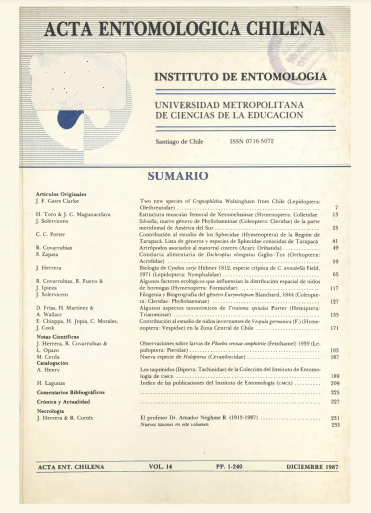Contenido principal del artículo
nov 16, 2022
Resumen
Chüicola (Chüicola) rubriventris; Ch. (Oediscelis) vemalis; Ch. (Stenoediscelis) inermis; Ch. (Idioprosopis) chalcidiformis;
Chilimelissa luisa; Xenochilicola mamigna y Xeromelissa wümattae. In all the species with enlarged
femora, the flexor muscle is highly enlarged and inserted dorsally in the basitibial area; the extensor
muscle is not modified. The enlargement of the tibia is not related to the tarsal muscle size. The tibial
muscles of the females and the males with not enlarged posterior femora are unmodified. Neofidelia
prófuga (Fideliidae) and Leucospis hopei (Leucospidae) are similar, when compared with Xeromelissinae,
but the shape of the tibia and other characters point out a different function. The enlarged femora of
Pararhophites orobinis (Anthophoridae), shows a larger extensor muscle. The presence of grasping
structures in the posterior región of the males of Xeromelissinae suggest a role in mating.


